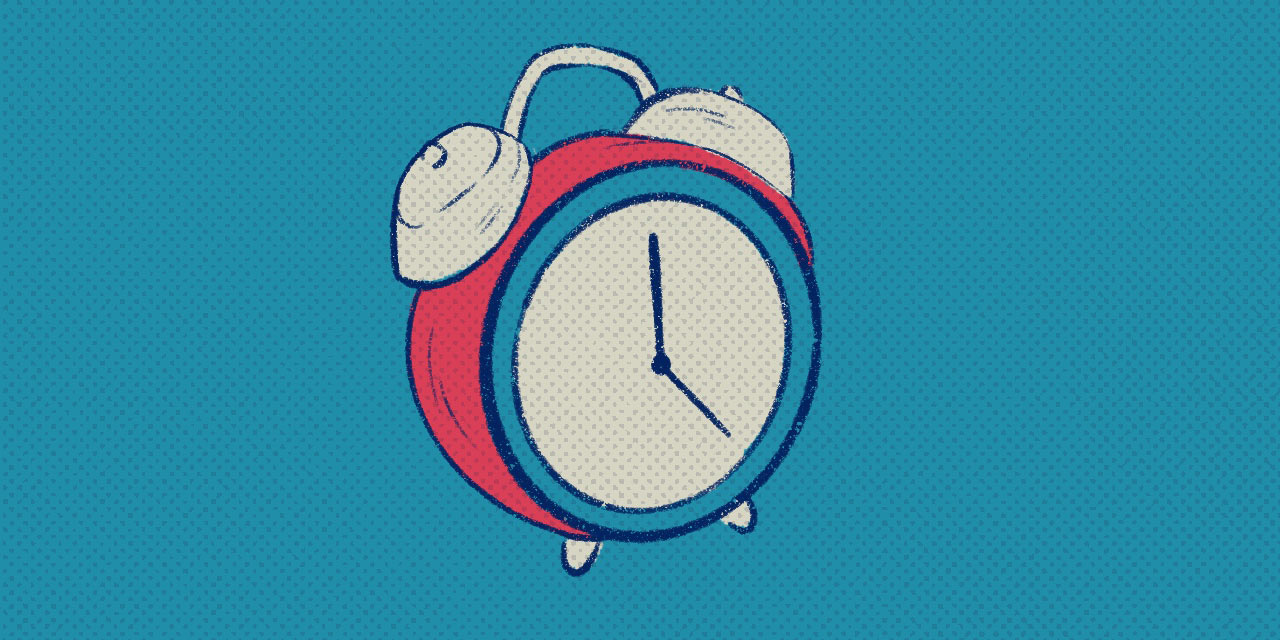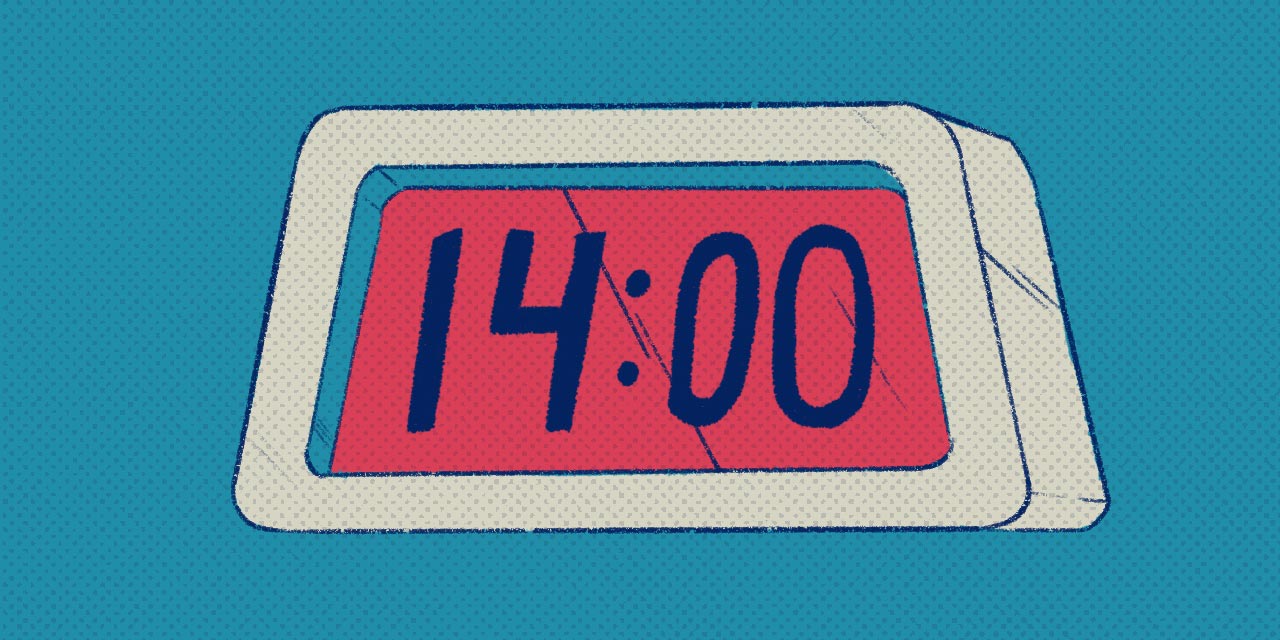Technically, 時 and 時間 aren't counters—they're "units."
As a part of our Japanese counters guide, we're covering 時 (じ) and 時間 (じかん). Technically, 時 and 時間 aren't counters—they're "units." But since they act basically the same as counters, we've grouped them the same way.
Note: before you study either 時 or 時間, we'd strongly suggest reading our guide on 分, which lays much of the groundwork you'll need to understand them. For our discussion, we'll start with 時 then follow with 時間.
Once you've read the 分 guide, you're ready to get started.
- Pronunciation of Japanese Counter (Unit!) 時
- Pronunciation of Japanese Counter (Unit!) 時間
- Meanwhile, 何時間 Later…
Pronunciation of Japanese Counter (Unit!) 時
When used after a number, 時 means "o'clock"—it tells us the time at the top of the hour. (You'll need to read about 分 to learn about minutes.) Start by reviewing the counting pronunciation for 時 from the table below.
| Numeral | Japanese | Reading 1 | |
|---|---|---|---|
| 1 | 一時 | いちじ | |
| 2 | 二時 | にじ | |
| 3 | 三時 | さんじ | |
| 4 | 四時 | よじ | |
| 5 | 五時 | ごじ | |
| 6 | 六時 | ろくじ | |
| 7 | 七時 | しちじ (ななじ) | |
| 8 | 八時 | はちじ | |
| 9 | 九時 | くじ | |
| 10 | 十時 | じゅうじ | |
| 11 | 十一時 | じゅういちじ | |
| 12 | 十二時 | じゅうにじ | |
| 13 | 十三時 | じゅうさんじ | |
| 14 | 十四時 | じゅうよじ | |
| 15 | 十五時 | じゅうごじ | |
| 16 | 十六時 | じゅうろくじ | |
| 17 | 十七時 | じゅうしちじ (じゅうななじ) | |
| 18 | 十八時 | じゅうはちじ | |
| 19 | 十九時 | じゅうくじ | |
| 20 | 二十時 | にじゅうじ | |
| 21 | 二十一時 | にじゅういちじ | |
| 22 | 二十二時 | にじゅうにじ | |
| 23 | 二十三時 | にじゅうさんじ | |
| 24 | 二十四時 | にじゅうよじ | |
| What time | 何時 | なんじ |
As you can see, 時 pretty closely follows the counting pronunciation section of our Japanese counters guide. Still, there are a couple of exceptions: the number 4 becomes よ in 四時, and the number 7 can be read as なな to avoid confusion with 1 (いち vs しち). Otherwise, it's relatively straightforward.
O'Clock

- 今何時ですか?
- What time is it?
時 is essentially the same as "o'clock" in English. Simple! Remember that Japanese people commonly use military time—1:00 in the afternoon, for example, would be written as 13時 in Japanese—which might be strange or perfectly normal for you, depending on where you're from.
- 今何時ですか?
- What time is it?
- 10時です。
- It's ten o'clock.
Sometimes it's important to specify what time of day you're talking about. For example:
- 朝の八時です。
- 8:00 in the morning.
- 夜の八時です。
- 8:00 in the evening.
A.M. vs P.M.
You can also use the words 午前 (ごぜん) for a.m. and 午後 (ごご) for p.m.; say them right before the hour.
- 午前4時にテレビを見ます。
- I will watch television at 4 a.m.
Military Time

Instead of specifying a.m. or p.m., it's probably easier to use the military or 24-hour clock.
- 今日は15時に退社しました。
- I left the office at 3 p.m. today.
- 19時に5人で予約できますか?
- Can I make a reservation for five people at 7 p.m.?
Adding in Minutes
If you read our guide on 分, you'll know that you can add minutes to the hour. 9時 is 9:00, but 9:10 is 9時10分.
- 息子は午後4時20分に生まれました。
- Our son was born at 4:20 p.m.
- もう3時33分だよ!
- It's already 3:33, you know!
Plus Thirty Minutes
If you're talking about time and want to say "something-thirty," as in 4:30, it's easier to just say 半 (はん) instead of 30分. 半 means "half," and by adding it to the hour, you're adding thirty minutes to it. 4時 is 4:00, but 4時半 is 4:30. It's much easier than saying or writing 4時30分.
- 午前十一時半に会議があります。
- We have a meeting at 11:30 a.m.
Pronunciation of Japanese Counter (Unit!) 時間

時間's primary meaning is "hours"—as in "twelve hours" or "twenty hours" or even "one hour."
Although it sounds similar to 時, the word 時間 refers to an amount of time in hours. It might help to break down 時間 like this: 時 means "hour" or "o'clock" and 間 means "interval." When we use 時間, we're talking about a certain interval of time in hours. If someone mentions that a film is 3時間, for example, that means it's three hours long.
Before we get into the details, take a little time to study the 時間 pronunciation list below.
| Numeral | Japanese | Reading 1 | |
|---|---|---|---|
| 1 | 一時間 | いちじかん | |
| 2 | 二時間 | にじかん | |
| 3 | 三時間 | さんじかん | |
| 4 | 四時間 | よじかん | |
| 5 | 五時間 | ごじかん | |
| 6 | 六時間 | ろくじかん | |
| 7 | 七時間 | しちじかん/ななじかん | |
| 8 | 八時間 | はちじかん | |
| 9 | 九時間 | くじかん | |
| 10 | 十時間 | じゅうじかん | |
| 11 | 十一時間 | じゅういちじかん | |
| 12 | 十二時間 | じゅうにじかん | |
| 13 | 十三時間 | じゅうさんじかん | |
| 14 | 十四時間 | じゅうよじかん | |
| 15 | 十五時間 | じゅうごじかん | |
| 16 | 十六時間 | じゅうろくじかん | |
| 17 | 十七時間 | じゅうしちじかん/じゅうななじかん | |
| 18 | 十八時間 | じゅうはちじかん | |
| 19 | 十九時間 | じゅうくじかん | |
| 20 | 二十時間 | にじゅうじかん | |
| 21 | 二十一時間 | にじゅういちじかん | |
| 22 | 二十二時間 | にじゅうにじかん | |
| 23 | 二十三時間 | にじゅうさんじかん | |
| 24 | 二十四時間 | にじゅうよじかん | |
| 100 | 百時間 | ひゃくじかん | |
| 1,000 | 千時間 | せんじかん | |
| 10,000 | 一万時間 | いちまんじかん | |
| How many | 何時間 | なんじかん |
時間's pronunciations are basically the same as 時's: 4 becomes よ, and 7 can be なな. Aside from that, it follows the rules from the chart in our Japanese counters guide.
Let's learn about how to use 時間.
Hours
時間's primary meaning is "hours"—as in "twelve hours" or "twenty hours" or even "one hour." It indicates an interval of time that's measured in hours.
- コウイチは每日八時間寝ます。
- Koichi sleeps for eight hours every day.
- でも昨日は四時間しか眠れませんでした。
- But he could only sleep for four hours yesterday.
- ここから苺畑まで歩いて二時間半かかります。
- From here it takes two and a half hours on foot to get to the strawberry farm.
- 一日は二十四時間です。
- One day is twenty-four hours.
- あと何時間ぐらいかかりそうですか?
- About how many more hours do you think it will take?
You can add other things to 時間—things that might be useful. Append 半, for example, and you add half an hour. 3時間半 means "for 3.5 hours." 5時間半 means "for 5.5 hours."
- 1時間半かかりますよ
- It's going to take an hour and a half.
School Classes

If you're in school, 時間 can also be used to count the number of classes you have. Combine it with the ordinal number suffix 目 (め) to specify a class period.
- 今日は六時間も授業があります。
- Today we have six classes.
- 明日は三時間しか授業がありません。
- We have only three classes tomorrow.
- 四時間目が休講になりました。
- Fourth period was cancelled.
- 一時間目は国語でした。
- First period was Japanese class.
Meanwhile, 何時間 Later…
That's it for our overview on the units 時 and 時間. Both are useful, so be sure to spend several hours studying them! 😀 We've mentioned it before, but make sure you read about 分 as well, because the lessons for 分, 時, and 時間 complement one another. When you've finished both, take some time (get it?) to learn about some other time-related counter-units like days (日), months (月), and years (年), to name a few.
If you've done all that, be sure to check out some of the other "deep dives" we've done: 人, 冊, and 羽 are solid choices.
And if this was your first counters experience, we suggest you read about the basics of Japanese counters, and then head on over to the big Japanese counters study list we put together, which also has links to every in-depth counters article we've written up to this point.
